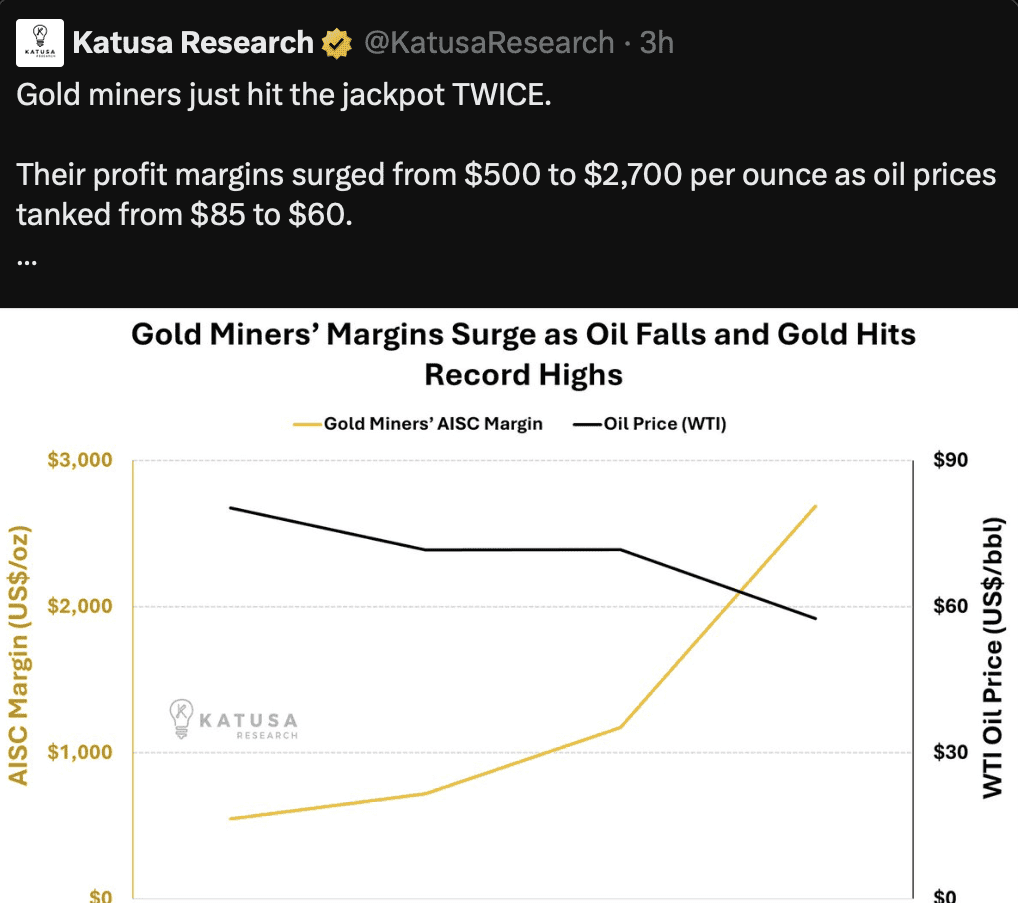They are experiencing one of those rare moments when everything aligns perfectly: gold prices are skyrocketing while oil, one of their largest costs, continues to fall. Over the past year and a half, gold jumped from around $1,900 per ounce to more than $4,000. At the same time, oil prices dropped from approximately $85 per barrel to $60. It's like selling your product for double while your expenses fall at the same time, a dream scenario for any business.
For miners, this configuration has become a gold rush of profits. Their total maintenance cost, which covers everything from mining and refining to maintenance and overhead, has remained stable around $1,200-$1,400 per ounce. Since energy accounts for approximately 20-30% of that, the drop in oil reduced another $100-$150 per ounce in expenses. Thus, when gold prices soared more than 70% while costs barely moved, margins skyrocketed from about $500 per ounce to over $2,700. That is the kind of differential that is rarely seen in mining history.
Much of the success lies in operational discipline. Many miners have become much more efficient, using digital technology for fleet management, optimizing mine sequencing, and improving worker productivity. A weaker U.S. dollar also contributed to lowering local costs in the countries where many mines operate. All of this combined has turned miners into cash machines. Free cash flow has increased, and most of it is being reinvested in dividends, stock buybacks, and debt repayments.
Mining stocks have outperformed gold itself, as analysts rushed to upgrade earnings forecasts. Some companies trade at premiums over the metal they produce, a sign that the market expects these strong profits to continue. With so much cash available, miners are also ramping up exploration and acquiring smaller companies to secure future reserves, preparing for the next phase of the cycle.
But this level of profitability will not last forever. If oil recovers to $70-$80, or gold retreats even 15-20%, those wide margins could quickly shrink. Labor inflation, rising environmental costs, and spending on the transition to renewable energy could slowly drive AISC back up. For now, however, gold mining companies are enjoying what could be their best year in decades, an exceptional opportunity where all the important factors finally play in their favor.
